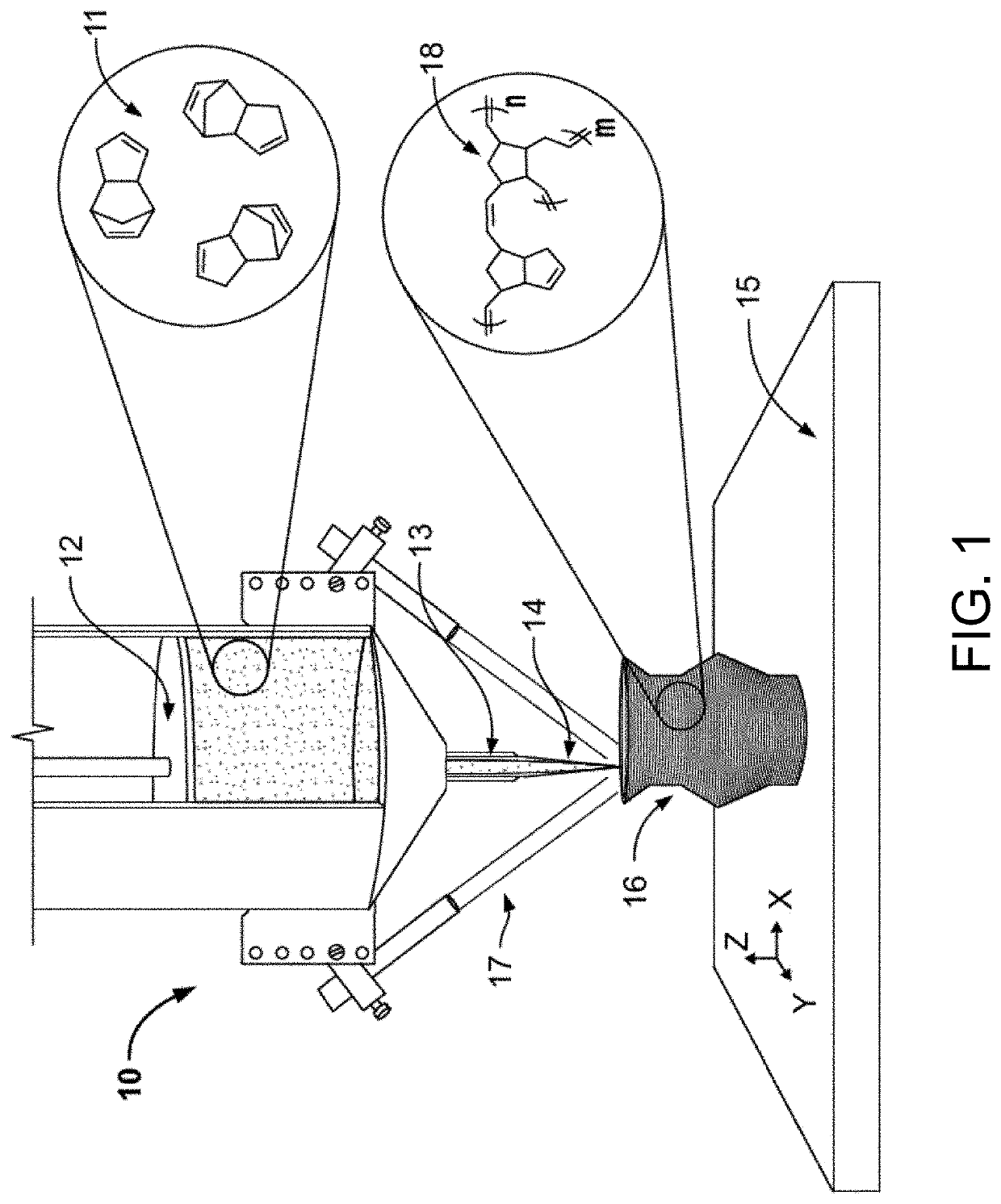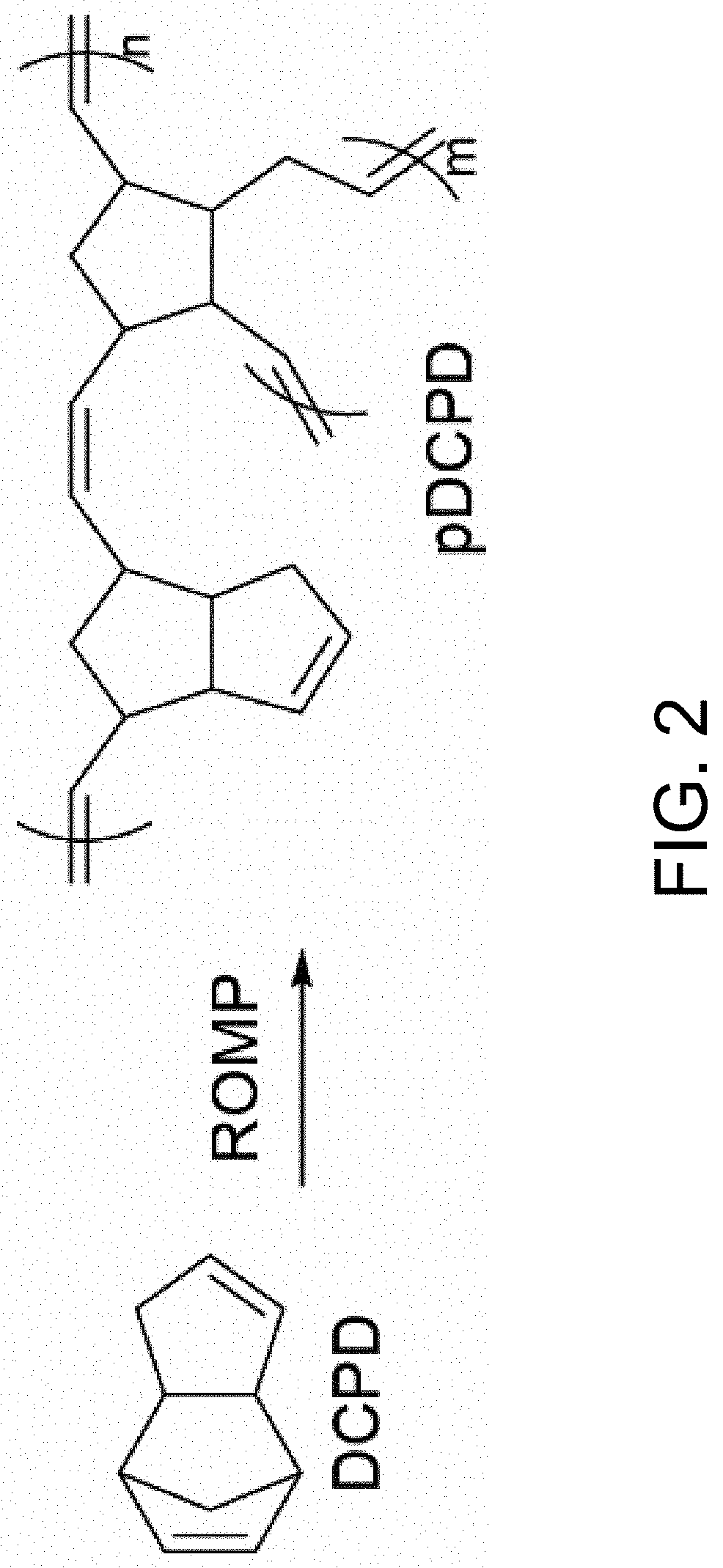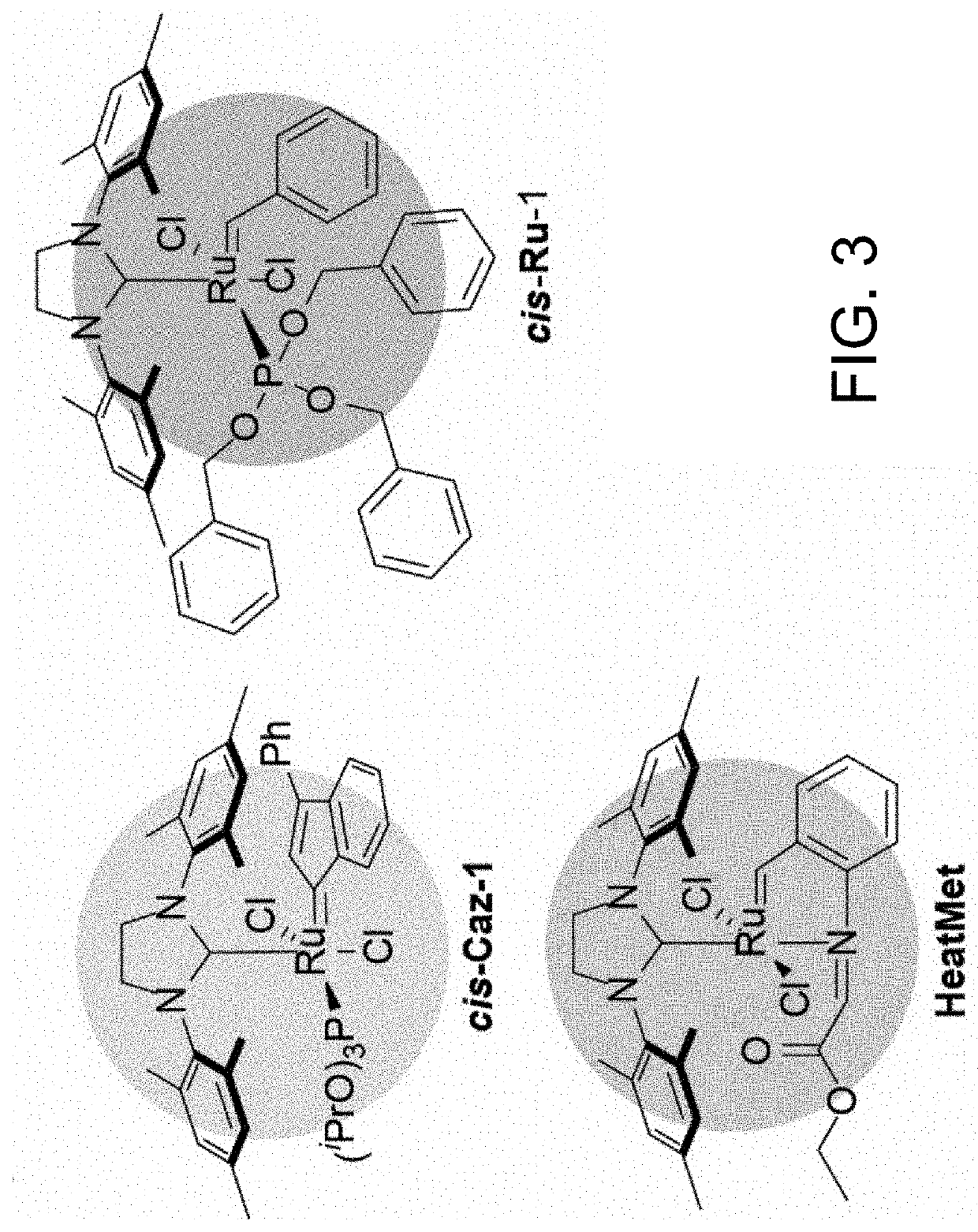Use of Latent Metathesis Polymerization Systems for Additive Manufacturing
a polymerization system and additive manufacturing technology, applied in additive manufacturing with liquids, additive manufacturing processes, manufacturing tools, etc., can solve the problems of limiting the attainable material properties, limiting the print speed, and the printing demonstrated so far has been limited to geometries without overlapping or adjacent layers. , to achieve the effect of improving the adhesion between layers, high catalyst stability, and unprecedented photocatalyzed romp ra
- Summary
- Abstract
- Description
- Claims
- Application Information
AI Technical Summary
Benefits of technology
Problems solved by technology
Method used
Image
Examples
Embodiment Construction
[0030]The present invention is directed to the use of latent olefin metathesis catalysts in combination with metathesis-active monomers or resins for additive manufacturing, such as direct-ink write (DIW) and stereolithography (SLA), via ring-opening metathesis polymerization (ROMP).
[0031]As shown in FIG. 1, DIW is an extrusion-based AM process that can be used to fabricate meso- and micro-scale objects. In DIW, a liquid-phase “ink”11, or resin, is extruded 12 out of a small nozzle 13 as a bead or filament 14 under controlled flow rates and deposited onto the surface of a platform 15. To build an object 16, the nozzle can be moved across the platform along digitally defined paths, or the platform can be scanned relative to a stationary nozzle, and directed irradiation of the deposited resin with light 17 or heat can photo or thermally initiate ROMP of the printed resin 18. The object 16 is thus built by printing the required shape layer-by-layer.
[0032]The general concept of latent m...
PUM
| Property | Measurement | Unit |
|---|---|---|
| wt % | aaaaa | aaaaa |
| front propagation speed | aaaaa | aaaaa |
| front propagation speed | aaaaa | aaaaa |
Abstract
Description
Claims
Application Information
 Login to View More
Login to View More - R&D
- Intellectual Property
- Life Sciences
- Materials
- Tech Scout
- Unparalleled Data Quality
- Higher Quality Content
- 60% Fewer Hallucinations
Browse by: Latest US Patents, China's latest patents, Technical Efficacy Thesaurus, Application Domain, Technology Topic, Popular Technical Reports.
© 2025 PatSnap. All rights reserved.Legal|Privacy policy|Modern Slavery Act Transparency Statement|Sitemap|About US| Contact US: help@patsnap.com



